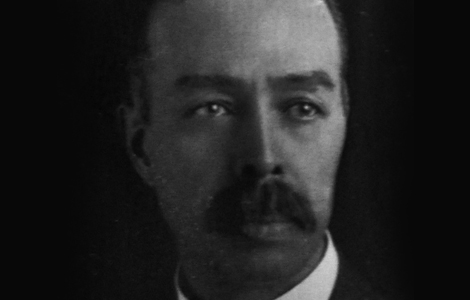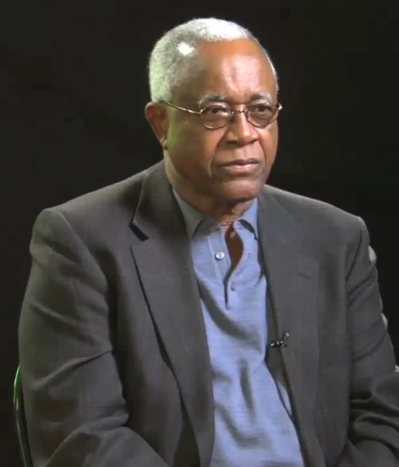Playgrounds spread across America in the early 20th century as cities grew and the movement for public recreation started to gain momentum. From the very beginning, Black leaders recognized the value of parks and playgrounds and advocated at all levels for investment in, and access to, these spaces.
These courageous stories of vision and action are an essential part of Black history and American history at large, but in many cases they are erased or forgotten in the mainstream narrative. Who are some of these leaders, and what can they teach us about the ongoing fight for playspace equity?
Lugenia Burns Hope

A prominent social reformer and civil rights activist at the turn of the 20th century, Lugenia Burns Hope challenged Jim Crow segregation in Atlanta at a time when no public parks or recreational spaces existed for Black children in the entire city – or in practically any city in America. Soon after moving to Atlanta in 1898, Lugenia joined a group of neighborhood women who organized to establish free kindergartens for the children of working mothers, and to raise funds to purchase land and equipment for community playspaces.
These early projects served as a springboard for other efforts to improve the quality of life for Black families in Atlanta. Lugenia worked with a group that evolved into the Neighborhood Union, the first female-run service agency for African-Americans in the city. The Union provided much-needed services that the government failed to provide to Black residents, including medical care, employment opportunities, recreation, and education.
The Neighborhood Union and her later work the Atlanta NAACP and YWCA served as a model for the broader Civil Rights Movement that developed in the following decades. Lugenia’s advocacy is just one example of how Black community leaders saw access to recreation as both an urgent necessity and a rallying cry to catalyze broader civil rights efforts.
Ernest T. Attwell
Organized public recreation didn’t catch on as a widespread phenomenon until the first two decades of the 20th century, when the rapid growth of cities created an urgent need for open spaces and recreational programs to help alleviate crowded conditions and support the health and development of young people.

To this end, humanitarian leaders in the Progressive Movement began advocating for the construction of public playgrounds, pools, and recreation centers in communities across the nation. In the era of “separate but equal”, Black Americans were restricted from enjoying these facilities and there were few options designated for their recreation, if any at all in most cities. If they did exist, they were almost universally substandard.
Ernest T. Attwell saw the need to extend public recreation to Black Americans and achieved great success during his career as an advocate, administrator, and organizer. Attwell began his career at the Tuskegee Institute, where he served as chair of the business department and the school’s head football coach for 11 seasons.
Millions of colored children and adults of this racial group representing one-tenth of our population have never felt the thrill of discovering a playground within their neighborhood; thousands more have not yet received the tremendous value of leisure-time guidance or trained leadership in play or recreational activities.
Ernest T. Attwell, from the 1928 National Conference of Social Work
In 1919, Attwell joined the Playground and Recreation Association of America and began developing recreation centers for Black Americans in 27 cities. Through his remarkable career, Attwell demonstrated the importance of investing in institutions, infrastructure, and people as a means of supporting Black recreation.
Training local recreation workers was among his top priorities, and his efforts increased the number of Black recreation leaders nationwide from 35 to 400 in just nine years. He contributed to national conferences and commissions on recreation, and served as a leader until his death in 1949.
J.T. Johnson
Throughout the 1960s, civil rights activists staged “wade-in” protests at segregated swimming pools and beaches throughout America. Historian Victoria Wolcott has characterized these leisure spaces as “among the most segregated and fought over public spaces in the North and the South” during this time.

J.T. Johnson was one such activist, and took part in a wade-in protest at a whites-only pool at a motel in St. Augustine, Florida. Weeks of marches and protests organized by Dr. Martin Luther King, Jr., Robert Hayling, Ralph Abernathy, and other civil rights leaders culminated in Dr. King being arrested and jailed when attempting to eat lunch at the Monson Motor Lodge. A group of activists, including J.T. Johnson, arrived in St. Augustine the following week and together they jumped into the Monson’s swimming pool.
A photographer snapped a now-iconic photo of what happened next. The manager of the hotel, James Brock, dumped a container of acid into the pool in an attempt to drive away the activists. The acid had no effect on the swimmers, who were soon arrested and jailed in their swimsuits. The image, however, spread across the nation and helped galvanize support for civil rights legislation. The stark contrast between the activists, a mixed-race group of young people doing something as harmless as floating together in a pool, and the manager, a violent and emboldened racist, underscored what was at stake.
That had not happened before in this country, that some man is pouring acid on people in the swimming pool,” J.T. says. “I’m not so sure the Civil Rights Act would have been passed had [there] not been a St. Augustine. It was a milestone. We [were] young, and we thought we’d done something — and we had.
J.T. Johnson
These transformational Black leaders show us that the civil rights movement has always included demands for equal access to recreation. While the current day struggle for equitable access to public spaces proves there’s still significant work to do, we know that progress is possible.
It’s time that we learn from the history of racial exclusion and make investing in spaces for Black joy a priority. Playgrounds have always been a racial justice issue, so let’s treat them like one.
At KABOOM!, we are inspired by these stories of change and the leaders who took a stand against racial injustice in recreation. We are committed to working with communities who are on the front lines of this work, and putting racial equity at the center of everything we do as an organization. Black leaders continue to inspire us and drive the work today, showing that progress is possible and playspace equity is an urgent but achievable vision.
